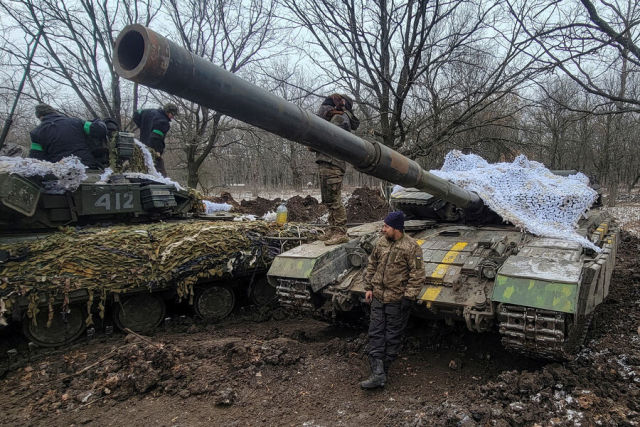Columnist Hodarenok calculated how many Western tanks the APU needs for a "turning point" at the front In an interview with ARD TV channel (Germany), Ukrainian President Volodymyr Zelensky said that Ukraine "is opposed by Russia, which has thousands of tanks, and partner countries are thinking about transferring 10 or 20 such vehicles."
Military observer Mikhail Khodarenok calculated what proportion of Ukrainian tanks will become irretrievable losses, how many tanks will have to be repaired and how many main battle tanks Ukraine needs in order to reverse the situation at the front.
A quite natural question arises - how many main battle tanks (MBT) of Western production are required by the armed forces of Ukraine to reverse the course of hostilities?
Before answering, we recall that so far only the United Kingdom has decided to transfer the OBT to the Ukrainian army. London is going to supply 14 Challenger 2 tanks to the armored forces of Ukraine. This figure will be needed later for a more than visual comparison of how much MBT is transmitted, and how much APU is required.
To begin with, it should be clarified that the length of the line of contact in the special operation zone is now 815 kilometers. The fighting is conducted in three main directions - Lugansk, Donetsk and Zaporozhye.
Let's simplify all operational calculations to the limit and assume that the armed forces of Ukraine need at least one tank division in each direction (currently, the Armed Forces of Ukraine mainly have brigades, but this will not fundamentally affect the essence of the calculations). For a front stretching 815 km, three tank divisions is more than a modest figure.
So, the main settlement operational unit we will have a tank division. According to the Soviet state, this unit should have 296 tanks, 230 infantry fighting vehicles, 54 self-propelled artillery units, more than 2 thousand cars and almost 12 thousand fighters and commanders.
Three directions - three tank divisions as mobile groups of troops of the directions (second echelons). The output is about 900 tanks. In addition, it is desirable to have another tank division in the Belarusian direction. Still, hypothetically, very hot battles can flare up on this section of the state border of Ukraine. And there is no way to do without such a reserve as a tank division (or a similar unit) in this case. And this is plus 300 tanks, a total of 1200 combat vehicles.
Finally, no Supreme commander-in-chief can do without his own reserve - the so-called reserve of the Supreme High Command, or RVGC. If there is not at least one tank division in such a reserve, then this is not quite a reserve. Plus another 300 cars. It turns out already 1500.
In addition, it is necessary to take into account the possible losses of the APU during offensive operations. The average daily losses of armored weapons in this case can be in the range of 10-15%. Of the tanks that have failed, about 15-20% will be irretrievable losses. The rest will require repairs, including: current - 30-50%, average - 15-30%, capital - 10-20%.
As a result, it is necessary to add at least 300 more tanks in order to quickly make up for losses already during the fighting. We get 1800 combat vehicles. At this stage, the UK is transferring 14 main battle tanks to Ukraine. This is less than one percent of what is actually required by the armed forces of Ukraine.
Let's say right away that these are very, very approximate and even rather primitive calculations. But here it is important to estimate not the exact number of tanks, but the order of the numbers.
What conclusions follow from all this? There is reason to believe that sooner or later Ukraine will receive not only 1800 main battle tanks of Western production, but even much more. Moreover, apparently, this scheme will acquire a two-stage character - at first, the countries of Eastern Europe will transfer the MBT to Ukraine, and only then - directly the manufacturers of this military equipment (USA and Germany). France will stand somewhat apart in this regard, but Ukraine will also receive its "Leclerc" sooner or later.
As for the Russian Armed Forces, in this situation they must achieve significant military and military-political results significantly earlier than the mechanism for the supply of Western weapons will be deployed at full capacity.
Mikhail Khodarenok

